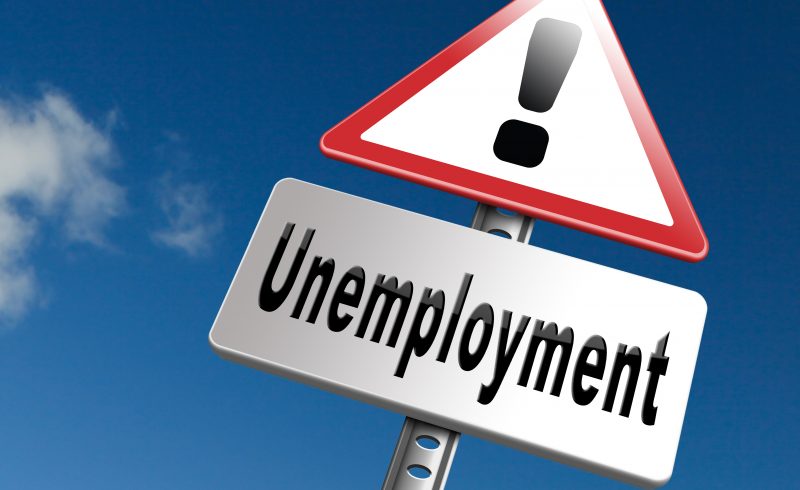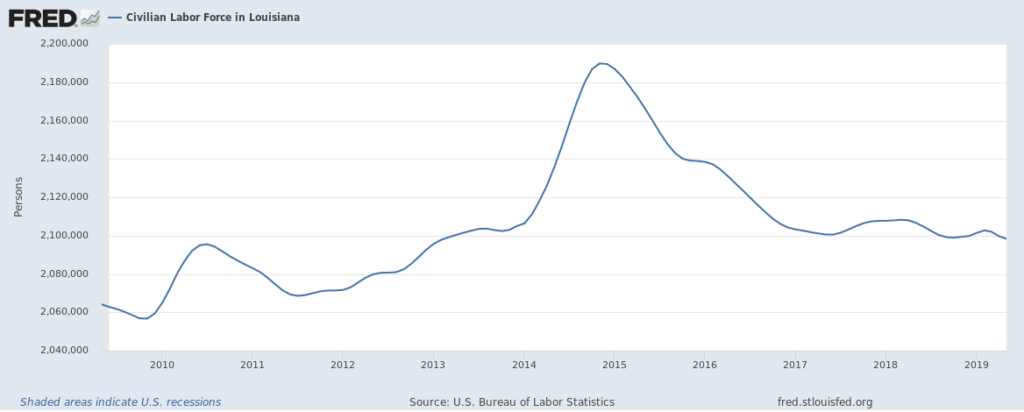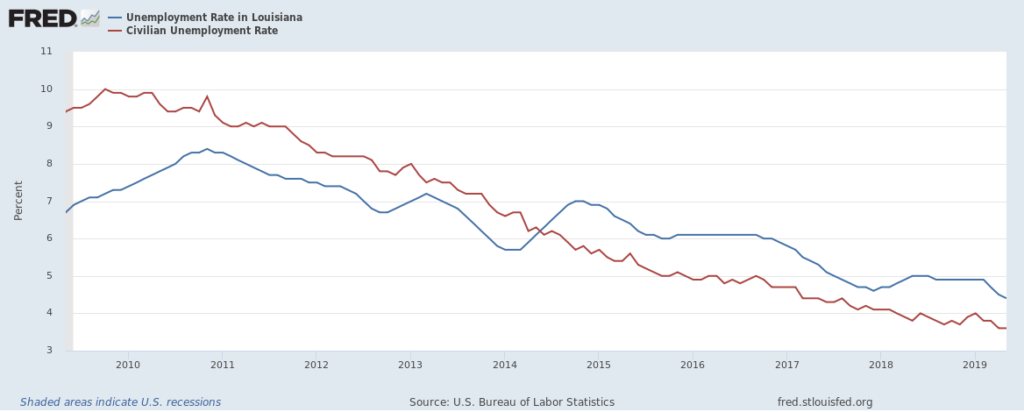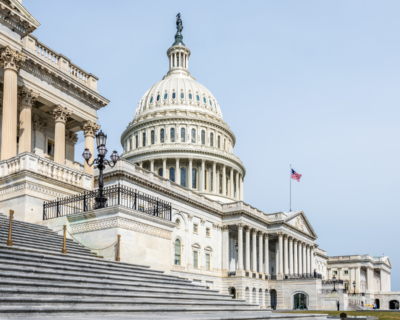
Another Month of Disappointing Economic Reports
With the recent economic reports from the Bureau of Labor Statistics and the Bureau of Economic Analysis, many have honed in on topline numbers that suggest Louisiana’s economy is in good shape. But, yet again, a closer look at the numbers in the report paints a more accurate and disappointing picture.
Perhaps the most deceiving number in these reports is Louisiana’s 4.4 percent unemployment rate. While this rate may seem satisfactory in a vacuum, more context shows the state of Louisiana’s economy is not as rosy as some claim.
While the unemployment rate is a reasonably good topline indicator, the real question is “are more people working in the state of Louisiana than last month”? That answer is disappointingly no. In April 2019, the total number of nonfarm payroll employees was 1,983,200. In May, that number decreased to 1,982,800. That’s a decrease of 400 people with a job. Since March, 1,700 fewer people have a job.
Another important measure of the health of a state’s economy is the civilian labor force, or those over 16-years old who are employed or are looking for work. A strong economy will often pull people off the sidelines, causing them to look for work and join the civilian labor force. Similarly, a state with people migrating to it in search of jobs and opportunity will also cause this number to rise.
Conversely, a weaker economy will cause people to drop out of the civilian labor force with a sense of defeat feeling as if they cannot find a job no matter how hard they look. This result will lower the unemployment rate, but not for good reasons.
Unfortunately, civilian labor force continues to decrease in Louisiana. From April 2019 to May 2019, the civilian labor force dropped from 2,099,673 to 2,098,308. That’s a decrease of 1,365 people. Compared to May 2018, the total decrease has been 8,269.
This is part of a more troubling trend in the Pelican state. Since its high point in November 2014, the civilian labor force in Louisiana has declined by more than 91,000, with no change in the overall trend.
Indeed, the drop in this number both explains Louisiana’s’ recent population loss and a significant drop in the state’s unemployment rate. Hardly a sign of a stellar economy.

But looking at the national numbers is also important to fully understand economic trends. Louisiana’s 4.4 percent unemployment rate remains the 7th highest in the nation and higher than all of its geographic neighbors other than Mississippi.
Examining the longer 10-year trend, for the last five years, Louisiana’s unemployment rate has been higher than the national average by approximately one full percentage point. This is still the case as the current U.S. unemployment rate sits at 3.6 percent.

Also of note, when it comes to unemployment rates, last month, many were calling attention to the fact that Louisiana’s unadjusted unemployment rate was 3.5 percent, the lowest on record. Curiously, the fact that this rate jumped to 4.1 percent this month has failed to be mentioned.
But what about Louisianans who do have jobs? How are they faring during America’s economic boom?
The Bureau of Economic Analysis provides some clues as they examine the earnings of workers around the nation every quarter.
Some have highlighted in this report a 4 percent increase in personal income, or all money received including government benefits, during the first quarter of the year. Even though this 4 percent still falls behind the 4.2 percent Southeast average, Louisiana does fairly well in this category compared to its neighbors.
In net earnings, or the amount that people earn by working minus contributions to social insurance programs, Louisiana fairs much worse. Compared to Southeastern states plus Texas, Louisiana had the 5th lowest increase in net income. Nationally, Louisiana had the 16th lowest increase in net income. It fell almost one entire percentage point short of the national average.
This means when it comes to the wages people are bringing home, Louisiana still has a lot of catching up to do.

We must choose: will we continue down the pathway of a broken status quo that continues to produce disappointing results for job seekers and working families? Or will we embrace a new vision for jobs and opportunity for Louisiana? We can only hope it’s the latter.



